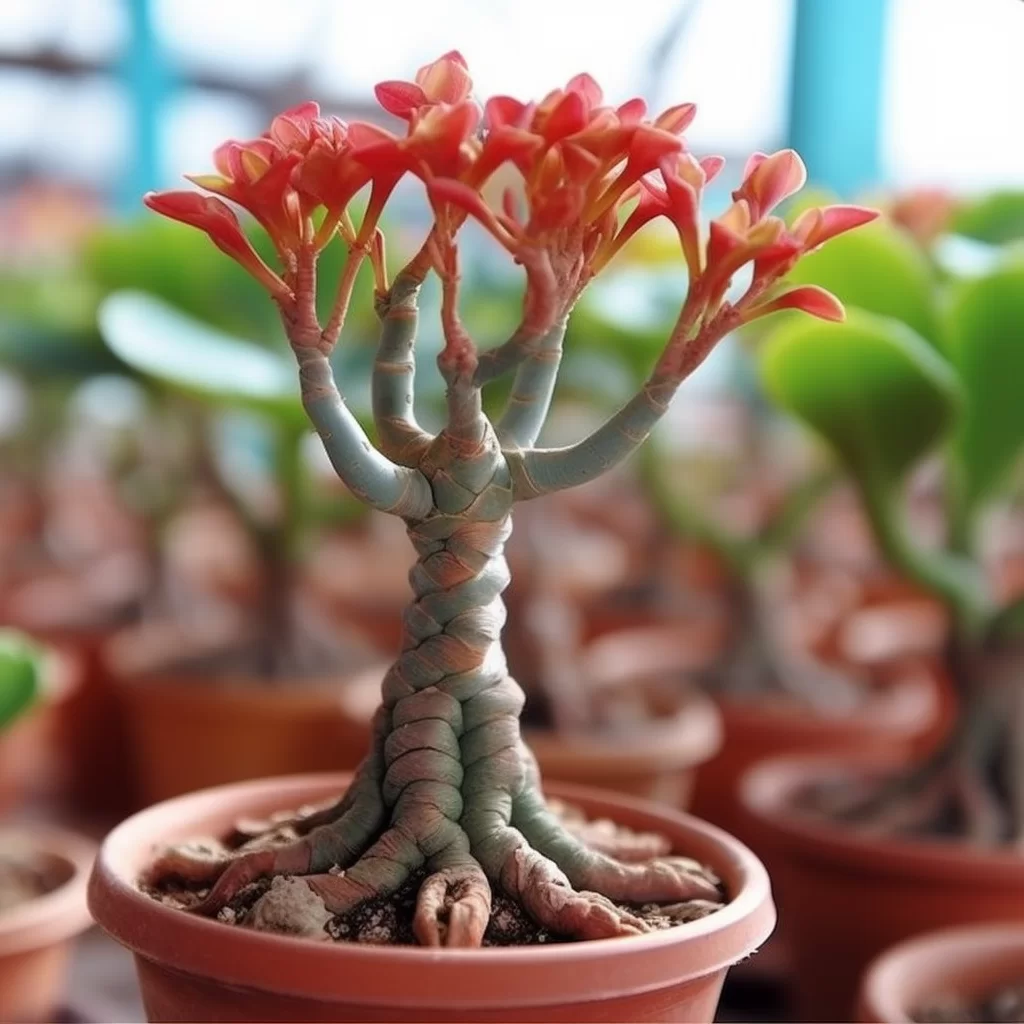Story of Day :
Contents
The Adenium Plant: A Complete Guide and Care Tips
Gardening is not only a calming pastime, but it’s also a great opportunity to expand your knowledge.
With an abundance of flora to choose from, making the decision on which plants to cultivate can be intimidating.
However, there’s one particular plant that has captured the interest of garden enthusiasts worldwide- the Adenium plant.
This succulent species goes by various names such as desert rose or impala lily and originates from Africa and Arabia.Adeniums have become increasingly popular due to their striking appearance and easy-to-care-for nature.
They’re known for their thick stems that store water, bright colorful blooms in shades of pink or red, and unique shapes resembling bonsai trees.
These plants thrive in warm temperatures with minimal watering requirements making them ideal for those who do not have much time or experience tending to greenery.
Additionally, Adeniums are often seen as symbols of resilience because they can survive harsh desert conditions -making them highly resilient against pests or diseases!
Appearance
The Adenium plant stands out for its striking appearance.
It has a plump trunk that stores water for survival in arid regions.
The trunk branches out into thick stems with lush green leaves growing at the top.
During the blooming season, clusters of vibrant flowers bloom in hues ranging from pink to red and white.
Care Tips
If you’re planning on adding an Adenium plant to your garden or indoor space, here are some care tips:
- Lighting: The Adenium requires plenty of bright light but not direct sunlight during hot afternoons.
- Soil: It thrives in well-draining soil with sand mixed with perlite or grit for better drainage.
- Fertilization: Use slow-release fertilizer once every three months during its active growth phase (spring till fall).
- Irrigation: Water only when the soil dries up completely since overwatering will lead to root rot and wilting foliage.
- Pests and Diseases: Watch out for spider mites, mealybugs and scale insects- common pests on adeniums – treat them immediately by spraying insecticidal soap or neem oil.

Propagation
The Adenium plant can be propagated through stem cuttings.
Cut a healthy stem in the spring season and let it callus for a day before planting it in well-draining soil.
Water sparingly until new growth is seen then follow the care tips mentioned above.
Benefits of Growing Adenium Plants
Besides its striking appearance, there are several benefits to growing Adenium plants:
- Aesthetic Appeal: The bright and colorful flowers make for an attractive addition to any garden or indoor space.
- Biodiversity: As a native species to Africa, cultivating this plant in your garden will contribute positively to biodiversity conservation efforts by providing an ecosystem niche for pollinators such as bees and butterflies.
- Medicinal Uses: Adenium plants have traditionally been used in African medicine due to their analgesic, anti-inflammatory and antimicrobial properties – research suggests they may help combat cancer cells as well!
In Conclusion
The Adenium plant is an excellent choice if you’re looking for an attractive yet low-maintenance addition to your green collection.
By following the care tips outlined above, you’ll be able to cultivate this beautiful succulent with ease while also making valuable contributions towards biodiversity conservation efforts.
Happy gardening!